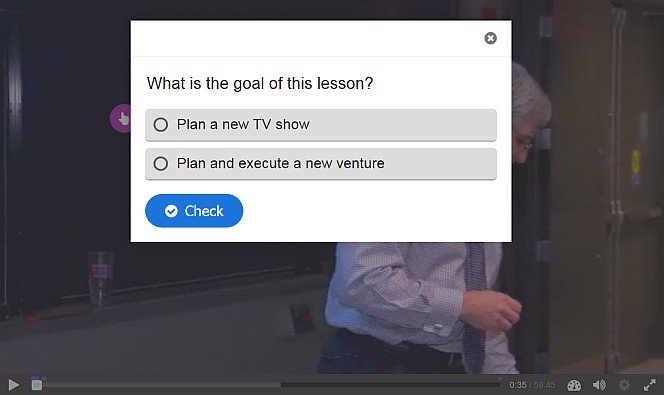The Future of Continuing Legal Education
One of the primary challenges facing lawyers and other legal professions is how to remain competitive in the face of the ever-changing legal field. While continuing legal education (CLE) has been a necessity for lawyers for many years now, the traditional delivery methods for learning can be time-consuming and difficult to complete while still serving clients. This is because standard CLE often demands that lawyers complete a set number of hours in order to satisfy the annual learning requirements. While these requirements are not mandatory in every state, they are often used as a professional standard. But, not all lawyers are at the same level and not all lawyers learn within the same timeframes. There is room to improve CLE and, thankfully, the solution is already available.
The recent advancements in technology and the improvements in continuing education delivery have made it possible to give CLE a major facelift with minimal changes. The legal field is incredibly diverse, one that is filled with professionals of different educational backgrounds, experience levels, and aptitudes. That is why CLE that additionally prioritizes practical skills, prior knowledge, and individual learning abilities can be a huge asset for every legal association.
1. Competency-Based Education
Competency-based education provides exactly what is needed in today’s world: education progress tracked by competencies. That means, rather than measure student progress by the time spent in a course, the competency-based model measures student aptitude. Within the realm of CLE, competency maps are created for each specific area of law and practice. While many competency maps are already designed, many more are currently being created by legal education professionals, such as the Institute of Continuing Legal Education (ICLE). These maps act as training guidelines or a checklist of mandatory coverage areas. They can be used for basic training or for experienced refresher courses and everything in between.
General Benefits of Competency-Based Learning
- Minimal time wasted on subjects that have already been mastered or are unnecessary for the learner
- Learning is more personalized, focused, and purposeful
- Learners progress at their own pace, no longer confined to standardized time markers
- Skill-based learning allows for quicker progress for more advanced learners
- Education is typically more affordable because learners pay only for what they require
Benefits for Continuing Legal Education: When competency-based education is combined with CLE, legal professionals stand to benefit substantially.
- Specified learning allows legal professionals to earn certifications or credentials in specific fields
- Focused learning enables quicker mastery as well as more current and applicable material
- Competencies in the legal profession are readily defined, which makes for easier course development
- Competency-specific modules double as refreshment courses and reminders for experienced lawyers
- Final outcome tests are powerful tools for measuring in-house applicant’s or trainee’s aptitude levels
2. Next Steps For Competency-Based CLE
Competency-based CLE will steadily improve. However, competency-based learning must ensure that it meets the following requirements:
- Learners must be able to absorb and apply learning
- Learning objectives must be identifiable and job-specific
- Learning must be engaging and immersive for modern learners
- Competency-based program must accurately measure prior learning and/or skills
- Learning must be current, relevant, and flexible
This is where interactive online video training comes in. Adult learners, especially those who work busy schedules like lawyers and other legal professionals, learn best when they control their learning schedule. For lawyers, some of the best learning comes at the exact time that they need it. Perhaps they are working with a new client or expanding their practice and need to develop new skills. Maybe they need to learn these new skills in the early morning while they prepare a document they are unfamiliar with, or maybe they wish to study in the evening when they come home from work. Interactive online training provides this flexibility.
Interactive Online Training
Despite being the fastest-growing form of continuing education today, interactive online video learning is still relatively new. That means that it’s still in the process of discovery. With online videos taking up about 1/3 of all internet activity, online educators are looking for the most effective ways of incorporating education into online videos. Optimal results in online video learning are found when the lessons are engaging, responsive, and, most importantly, interactive. Interactive online training often begins with a demonstration. The learner must then apply their learning into practical scenarios to demonstrate adequate understanding.
Interactive Online Training Benefits: The best way to improve the educational experience of online videos is to turn them from a passive experience into an active experience.
- Learn by practice and through the recollection of actual experience
- Learners are given real-world scenarios and situations to apply learning
- Keep learner’s engaged, attentive, and retentive, gauging comprehension levels on the go
- Multiple delivery methods, such as gamified, scenario-based, and/or story-based videos
- Intuitive videos enable learners to apply prior learning or to advance through completed sections
3. Competency-Based Online CLE and Interactive Video Training
Though interactive online CLE is still in its infancy, the relationship between these two sides is absolutely ideal. Over time, CLE programs have morphed from long on-demand videos into short modular segments that are more focused and visually enhanced. Furthermore, time waste is drastically reduced, and the study flexibility increases tenfold. Since the benefits for learners are so huge, it often reflects in higher course purchases and an increase in course attendance.
Benefits of Competency-Based Interactive Online CLE:
- Increase of course attendance and course revenue
- Realistic and challenging scenarios make learning engaging and useful
- Material learned from nano credits is gained quickly and instantly applicable
- Effective for self-assessment, training, and/or mastery of a topic
- Nano courses are quick and easy to create, allowing lawyers to earn credits in newly developed areas
- Easily created and updated videos allow for the most up-to-date and relevant information
- Enables lawyers to stay engaged while learning around very demanding schedules
- Situational-based learning and exercises helps for drafting documents, answering client questions, and many other scenarios
Interactive online video courses will eventually cover all legal areas. Right at this moment, lawyers can advance their skills in many of the areas they want, when they want, and in the order they want. With interactive online video, lawyers and legal professionals can achieve these skills in more engaging and practical ways while better retaining more applicable knowledge.
Vocalmeet’s legal education platform comes with a customizable interactive video player that creates an engaging learning experience for your members. Here are a few examples that can be used for all of the strategies outlined above:
a) Hotspots

b) Multiple Choice

c) Smart Chapters & Single Choice

d) Fill in the blanks & Slide Carousel





